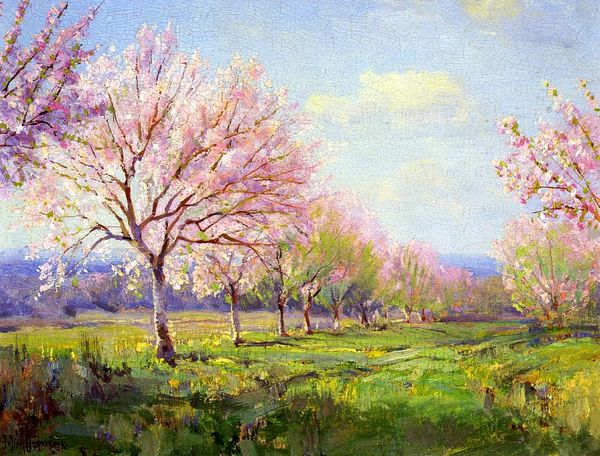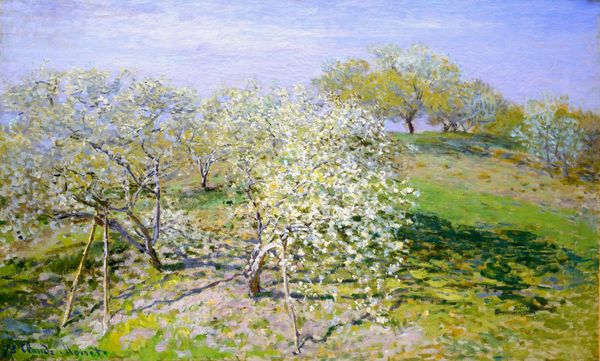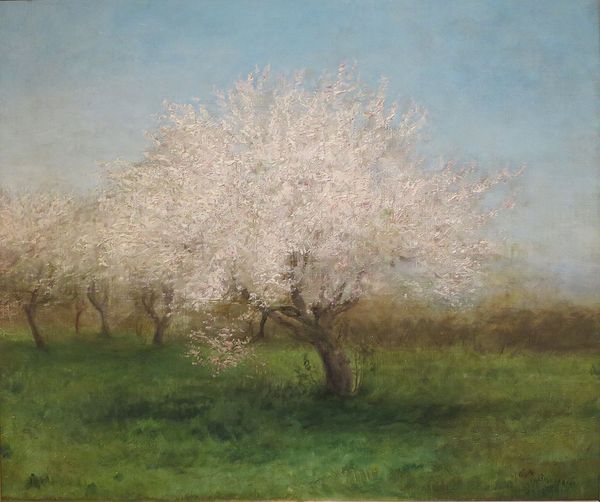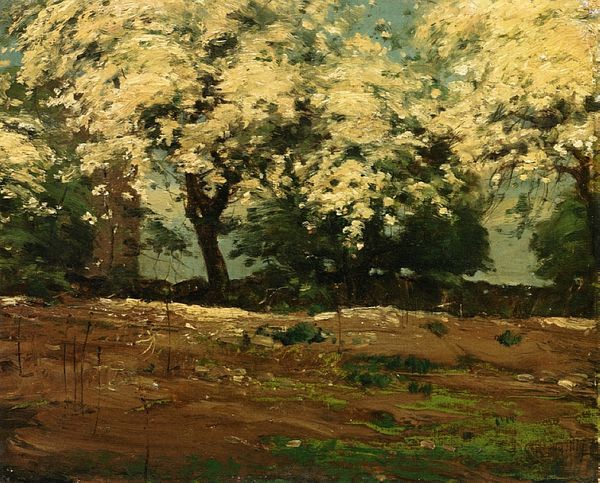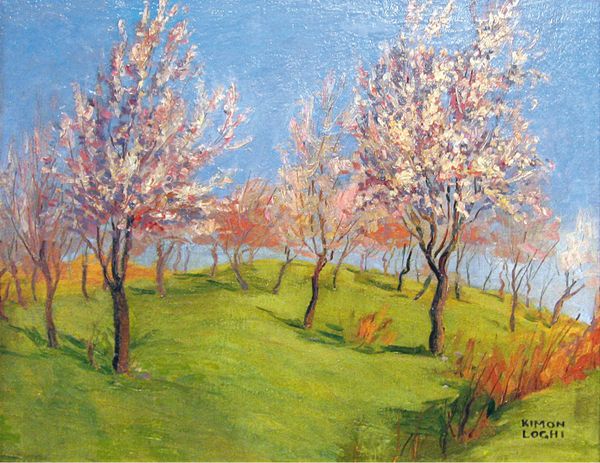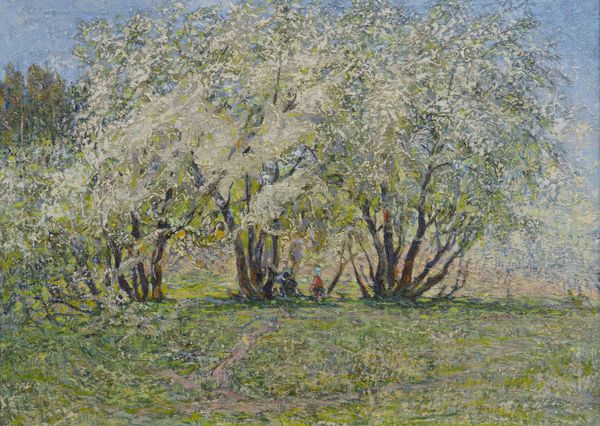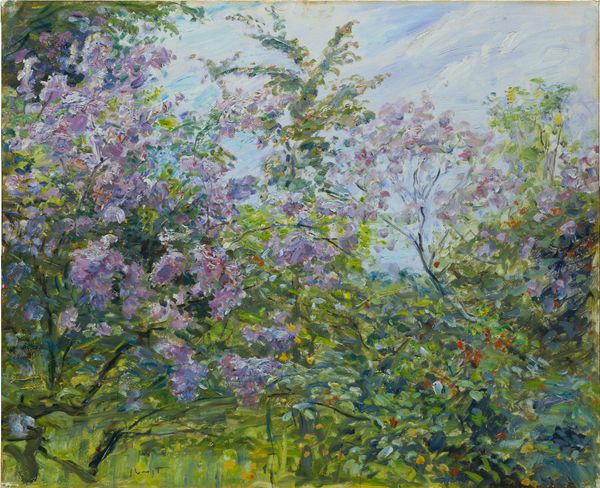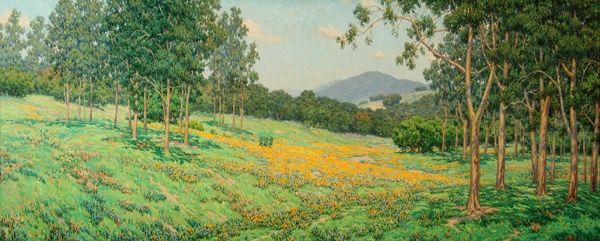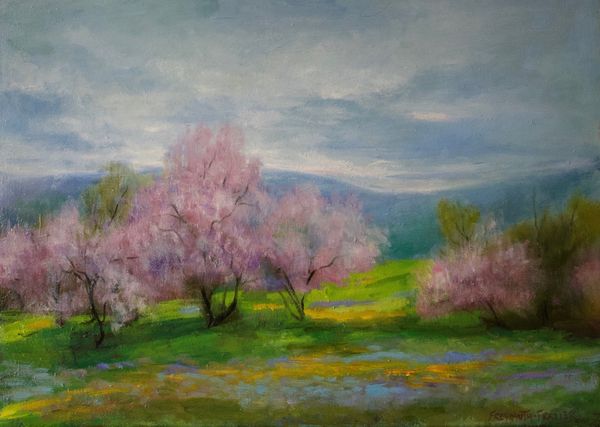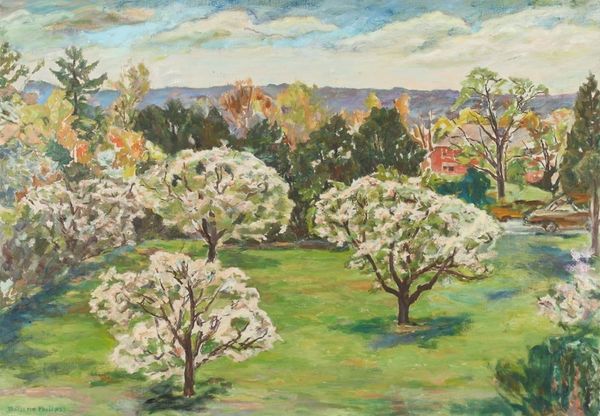
Copyright: Public domain
Editor: "The Pear Orchard," an oil painting by Alfred Parsons, dating back to 1903. It has a serene, idyllic quality, doesn't it? All that blossom creates a beautiful, almost ethereal scene. What can you tell us about the socio-political forces that influenced its creation or reception? Curator: That's an excellent observation. Parsons painted this during a period when England was deeply romanticizing its rural past, responding, in part, to anxieties about industrialization and urbanization. How does this painting, in your view, participate in this romantic vision? Editor: Well, it certainly seems to idealize country life. The shepherd, the grazing sheep, the blossoming trees… it all feels very peaceful and removed from the realities of the industrial revolution. Is that something Parsons intentionally sought to convey? Curator: I think it's very deliberate. Consider the context. Parsons exhibited regularly at the Royal Academy, an institution deeply invested in upholding traditional values and aesthetics. A painting like this would have been perceived as a celebration of English heritage at a time when that heritage felt threatened. Does that idealization ring true now? Editor: I suppose that idealized vision, though beautiful, also feels somewhat detached and perhaps a bit selective in what it portrays of rural life. There’s a feeling that he’s carefully curated this particular view, so to speak. Curator: Precisely. Parsons wasn't just depicting a pear orchard; he was constructing a carefully considered image of Englishness, one that reinforced specific social and cultural narratives. In a way, even today, these images influence how rural landscapes are preserved and presented to the public. It shows how artistic choices intertwine with cultural values and even policy-making. Editor: That’s really insightful; I’d never thought about it that way before. I guess it’s not just about beauty, but about the power of art to shape our understanding of history and culture. Curator: Indeed. "The Pear Orchard" is much more than a pretty picture. It reflects the complex relationship between art, society, and the stories we tell ourselves about who we are.
Comments
No comments
Be the first to comment and join the conversation on the ultimate creative platform.
